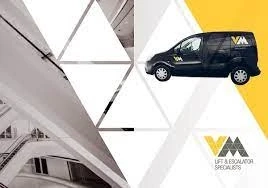Lift breakdowns can be both frustrating and inconvenient, causing delays and disrupting daily routines. Understanding the common reasons behind lift failures can help building managers, maintenance teams, and users alike to prevent such occurrences. Here are five common culprits behind Lift Breakdowns:
- Electrical Malfunctions: Electrical issues are among the most frequent causes of lift breakdowns. These malfunctions can range from power supply failures to problems with control panels or wiring. Over time, wear and tear on electrical components can lead to short circuits, blown fuses, or malfunctioning sensors. Regular inspections and maintenance by qualified technicians can help identify and address potential electrical issues before they cause a breakdown.
- Mechanical Failures: Lifts are complex mechanical systems with numerous moving parts, including motors, pulleys, and cables. Mechanical failures can occur due to component wear, lack of lubrication, or improper adjustment. For instance, worn-out bearings can cause excessive friction, leading to motor overheating and eventual failure. Regular greasing, alignment checks, and component replacements as per manufacturer recommendations can help prevent mechanical breakdowns.
- Door Problems: Lift doors are critical for passenger safety and must function smoothly and reliably. Common door-related issues include misalignment, sensor faults, or problems with door closing mechanisms. Misaligned doors can jam or fail to close properly, triggering safety features that prevent the lift from operating. Regular inspections of door components, such as rollers, tracks, and sensors, can help detect and resolve potential issues before they escalate into breakdowns.
- Hydraulic System Issues: Hydraulic lifts rely on fluid pressure to move between floors, making the hydraulic system a crucial component. Leaks, pump failures, or valve malfunctions can disrupt the hydraulic system\'s operation, resulting in lift breakdowns. Hydraulic fluid leaks not only affect lift performance but can also pose safety hazards if left unaddressed. Regular checks of hydraulic fluid levels, seals, and pressure readings are essential for maintaining the system\'s integrity and preventing breakdowns.
- Software or Control System Failures: Modern lifts often feature sophisticated control systems that govern their operation and safety functions. Software glitches, programming errors, or communication failures can compromise the lift\'s performance and lead to breakdowns. Issues such as faulty sensors or programming bugs may cause the lift to stop unexpectedly or exhibit erratic behavior. Regular software updates, along with thorough testing and troubleshooting, can help mitigate the risk of control system failures.
Understanding the common reasons for Lift Breakdowns is essential for effective maintenance and prevention strategies. By addressing electrical, mechanical, door-related, hydraulic, and control system issues proactively, building managers and maintenance teams can minimize the occurrence of lift failures and ensure passenger safety and comfort. Regular inspections, maintenance routines, and prompt repairs are key to keep



